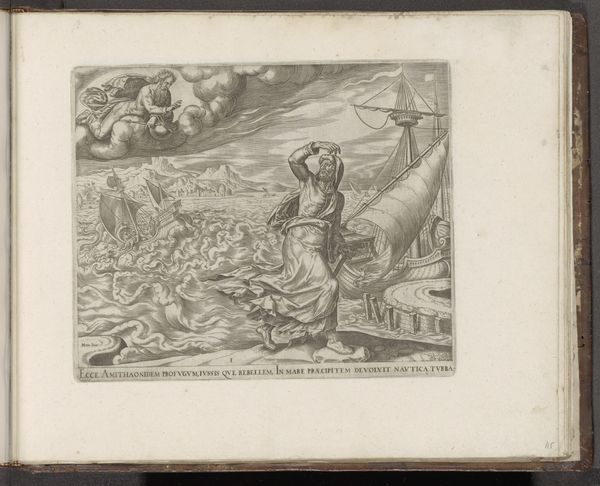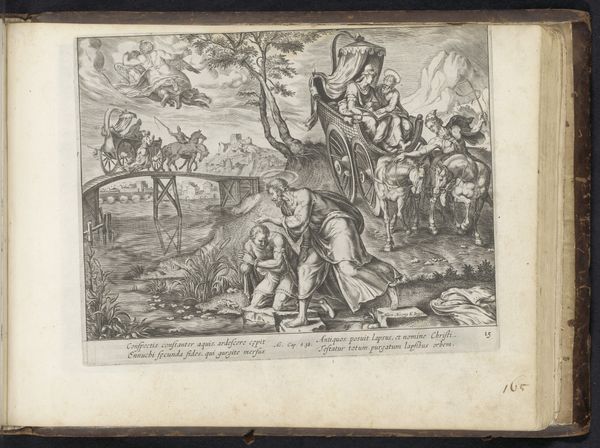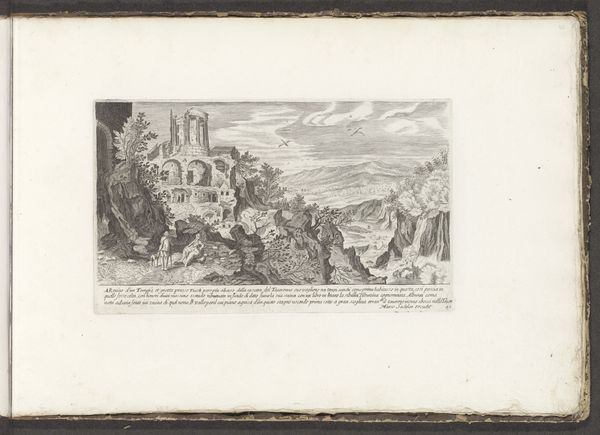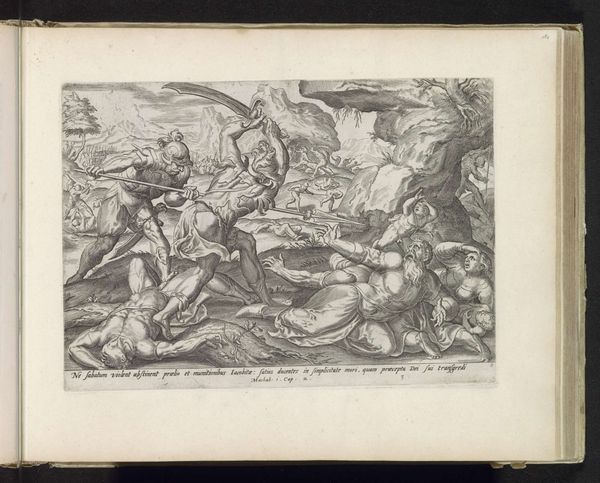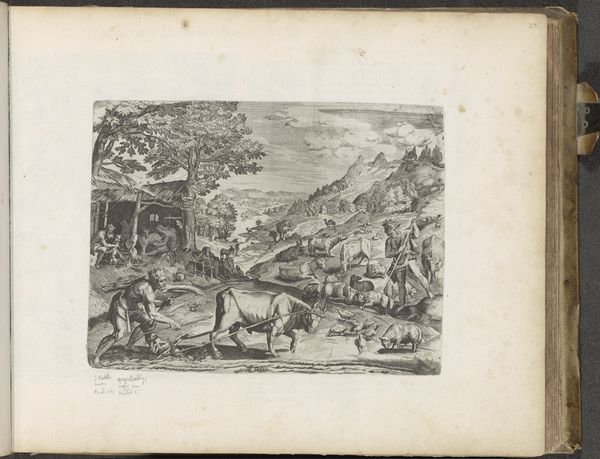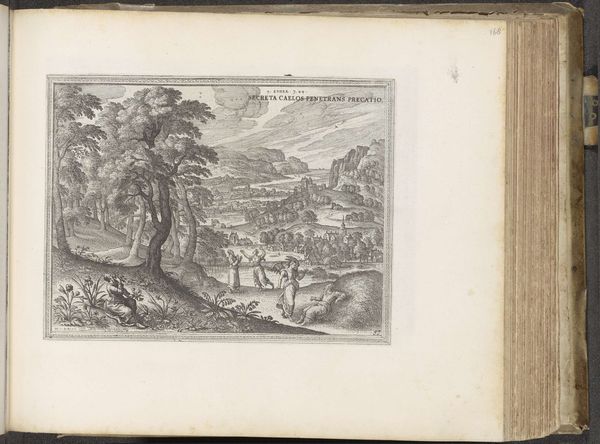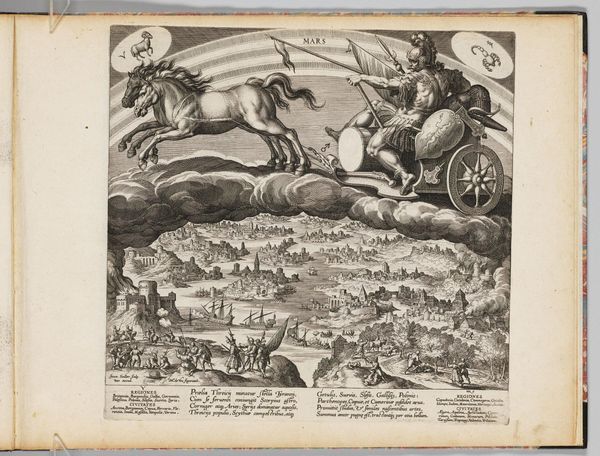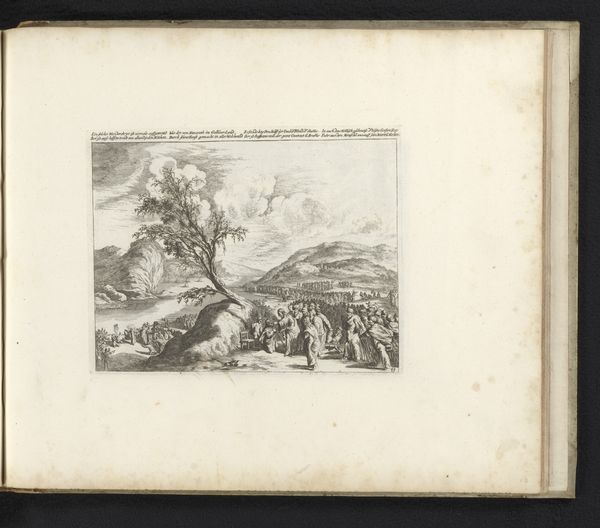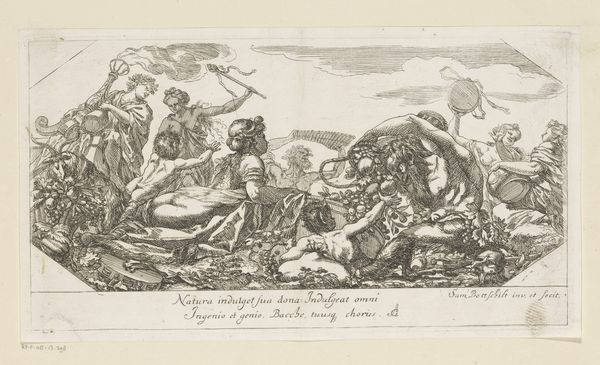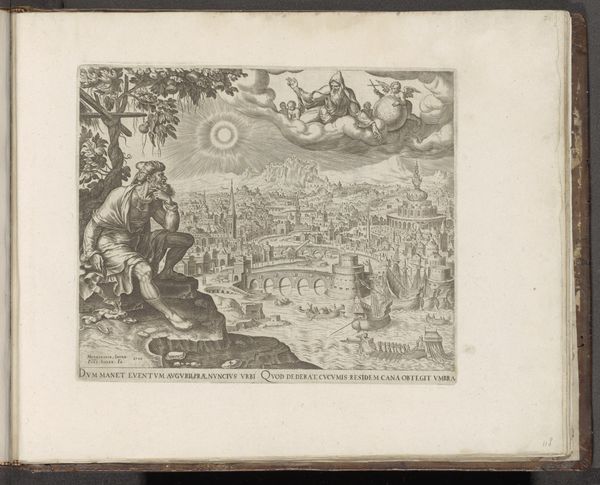
Dimensions: height 207 mm, width 248 mm
Copyright: Rijks Museum: Open Domain
Editor: Here we have "De vis spuwt Jona uit op het land," or "The fish spits Jonah out on the land," by Philips Galle, made sometime between 1566 and 1579. It's an engraving. There's something very dramatic about the scene, all that churning water and the flailing figure of Jonah. What strikes you about this piece? Curator: The method of production here is crucial. This isn’t a unique painting; it’s an engraving, meant to be reproduced and disseminated. Consider the labour involved – the artisan meticulously carving the image into the metal plate. Galle wasn’t just illustrating a biblical story, he was participating in a wider industry. Where would this print have been sold, and to whom? Editor: Presumably, it would have been circulated widely given the medium of engraving. It could be accessed by common people...but the fine detail, would that have had a particular appeal to wealthier collectors? Curator: Precisely! It's about how meaning is shaped by its accessibility, how an image transitions from scripture to commodity through printmaking. Think about the paper itself: where did that come from? What was the social status of papermakers in the 16th century? Those material details enrich the narrative, don’t they? The artist creates an interpretation, then this can become a commodity traded in the market... Editor: I never really thought about religious art as participating in consumption so actively at the time. Curator: This changes our perception, right? Seeing the process and materials used to produce "art" contextualize social background on art making. It’s not just about religious meaning; it’s about the entire production, labour, distribution and consumption line in the late 16th century! Editor: Definitely given me a new lens on how to think about artmaking and the economic realities behind art.
Comments
No comments
Be the first to comment and join the conversation on the ultimate creative platform.
